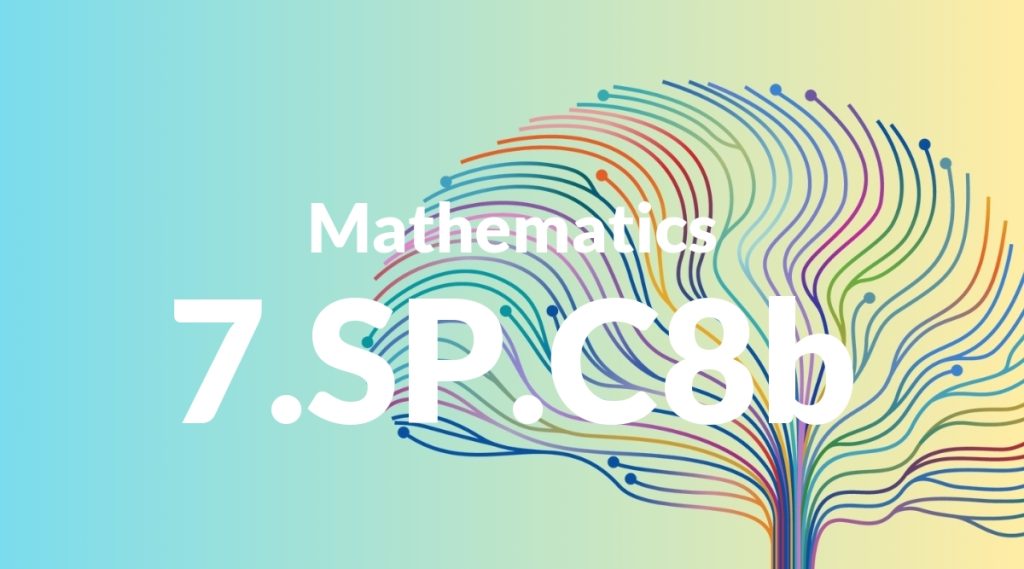Standard: 7.SP.C8b – Represent sample spaces for compound events using methods such as organized lists, tables and tree diagrams. For an event described in everyday language (e.g., “rolling double sixes”), identify the outcomes in the sample space which compose the event.
Grade level: Grade 7
Subject: Mathematics
Domain: Statistics & Probability
Teacher Overview
This standard focuses on representing sample spaces for compound events using organized lists, tables, and tree diagrams. Understanding these methods is crucial for students as it lays the foundation for more advanced probability concepts and applications. Students should have a solid grasp of basic probability, including the ability to determine the probability of simple events. They should also be comfortable with creating and interpreting organized lists and tables.
Mastering this standard will enable students to tackle more complex probability problems involving independent and dependent events, which are essential skills for high school mathematics and real-world applications.
Common Misconception 1
Some students may incorrectly assume that the probability of a compound event is the sum of the probabilities of the individual events. This misunderstanding arises from a lack of clarity on how compound events are calculated.
Intervention 1
To address this misconception, use tree diagrams to visually demonstrate how probabilities of compound events are determined by multiplying the probabilities of individual events.
Common Misconception 2
Another common misconception is that all compound events have the same likelihood. Students may not realize that the probability of a compound event depends on the specific outcomes and their probabilities.
Intervention 2
Use examples and counterexamples to clarify that compound events can have different probabilities based on the individual outcomes involved.
Prerequisite Knowledge
Students should understand basic probability concepts, including simple events and their probabilities. They should also be familiar with creating and interpreting organized lists and tables.
Subsequent Knowledge
Students will develop skills in calculating probabilities for more complex events, including independent and dependent events, and will be able to apply these concepts to real-world situations involving uncertainty and risk.
Instructional Activities
- Create tree diagrams for rolling two dice and identify the outcomes.
- Use organized lists to represent possible outcomes of flipping two coins.
- Develop tables to show the sample space for drawing two cards from a deck.
- Simulate real-world scenarios like predicting weather outcomes.
- Group activities to analyze probabilities in board games.




